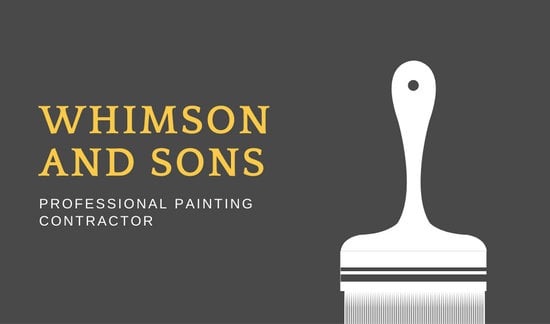Seasonal Factors To Consider For Industrial Exterior Paint: What You Required To Know
Seasonal Factors To Consider For Industrial Exterior Paint: What You Required To Know
Blog Article
Content By-Ford Whalen
When you're planning a commercial outside paint task, seasonal variables can make or break your outcomes. You'll intend to think about exactly how temperature and moisture effect paint application and drying out times. Picking the best season can ensure your paint sticks effectively and lasts much longer. Yet which seasons are genuinely the best for this type of job? Let's check out the key elements that can influence your job's success.
The Influence of Temperature Level on Paint Application
When you're preparing an industrial outside painting task, the temperature level can significantly influence just how well the paint sticks and dries out.
Ideally, you intend to repaint when temperature levels vary in between 50 ° F and 85 ° F. If exterior painting service near me 's too chilly, the paint may not cure correctly, resulting in concerns like peeling off or splitting.
On https://independent-painters-near64849.laowaiblog.com/33324890/find-out-about-the-cutting-edge-techniques-and-trends-in-residence-painting , if it's as well hot, the paint can dry as well rapidly, preventing correct bond and causing an irregular surface.
You ought to additionally think about the moment of day; morning or late afternoon supplies cooler temperature levels, which can be more beneficial.
Always examine the producer's recommendations for the particular paint you're using, as they often supply support on the suitable temperature level array for optimum outcomes.
Moisture and Its Impact on Drying Times
Temperature level isn't the only ecological variable that influences your industrial outside paint job; humidity plays a significant role as well. High moisture degrees can decrease drying out times significantly, affecting the general high quality of your paint task.
When the air is filled with moisture, the paint takes longer to heal, which can result in issues like poor attachment and a higher threat of mildew development. If you're repainting on an especially humid day, be gotten ready for extensive delay times in between layers.
It's essential to keep track of neighborhood weather conditions and plan as necessary. Ideally, aim for humidity levels in between 40% and 70% for optimum drying.
Keeping these consider mind guarantees your task remains on track and delivers a lasting finish.
Best Seasons for Commercial Outside Paint Projects
What's the very best season for your commercial outside paint jobs?
Springtime and early loss are commonly your best choices. During these periods, temperature levels are moderate, and moisture levels are often lower, developing ideal conditions for paint application and drying out.
Stay clear of summertime's intense heat, which can trigger paint to dry also rapidly, leading to inadequate adhesion and finish. Likewise, winter season's cool temperatures can impede proper drying and treating, running the risk of the longevity of your paint work.
Go for days with temperature levels between 50 ° F and 85 ° F for optimum outcomes. Bear in mind to examine the neighborhood weather prediction for rainfall, as damp conditions can ruin your project.
Planning around these variables ensures your painting job runs efficiently and lasts longer.
Verdict
To conclude, planning your commercial outside paint jobs around seasonal considerations can make a significant difference in the end result. By scheduling job during the ideal temperatures and moisture levels, you'll ensure far better bond and drying out times. Keep in mind to watch on neighborhood weather prediction and select the right time of year-- spring and very early loss are your best options. Taking these actions will help you achieve a resilient and professional coating that lasts.
